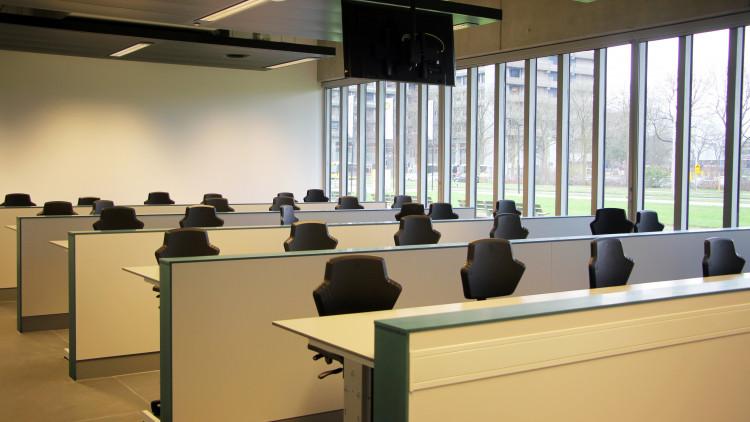High 'no show' rate for education in UU buildings

The University doesn’t know exactly what causes the high percentage of 'no shows' and will investigate the matter further. It is suspected that a large part of the activities planned have ultimately taken place online, possibly because students or teachers had to quarantine.
The University decided earlier this year that only 30 percent of all educational activities could take place in its buildings. Students had to follow most of the lectures and seminars at home, online.
However, many people, including the Chair of the Executive Board, Anton Pijpers, noticed that it is too quiet in the University buildings – even though many students insist that they want more 'physical' education. The Executive Board therefore decided to examine what the limited schedule meant for the occupation of UU’s thirteen most important buildings.
Mainly lectures and seminars cancelled
The studies were carried out for ten days and concluded that, of the 3552 teaching activities scheduled, 38.9 percent did not take place at the planned location.
Exams were hardly ever cancelled -- it was mainly physical lectures and seminars that were called off. The ‘no shows’ were particularly high in the time slot between 5 and 7 PM. In more than 60 percent of the rooms checked, the researchers didn’t find the lecturers and students who were supposed to be there at that time.
Still occupied
Although many of the activities planned did not take place in the University’s buildings, about 28 percent of the teaching space was occupied nevertheless. In 1060 cases, students were present in rooms that had not been scheduled during the ten days of research.
According to the University, most of them were 'unplanned study activities', such as passing the time between two lectures or working on a group assignment. Practicum rooms are also intensively used outside regular teaching hours.
The University says it would like to continue to offer space for this type of activities, considering the great need for places to study or work in groups. “Moreover, our impression is that students adhere well to the 1.5-metre instructions", says a spokesperson. "No problems have been observed in traffic to and from the campus either.”
More education plans
Because the groups of students using the halls for self-study is small, just over half of the rooms’ maximum occupancy is being used. On average, there are 8.8 people in a room.
Considering all these findings, the University believes that more educational activities can be planned in lecture halls, without causing problems in the halls, corridors and toilets. Besides, the ‘no show’ rate is expected to increase. That’s why, in the second semester, programmes may plan 35 percent of their activities to happen in the University’s buildings, instead of the 30 percent currently allowed.